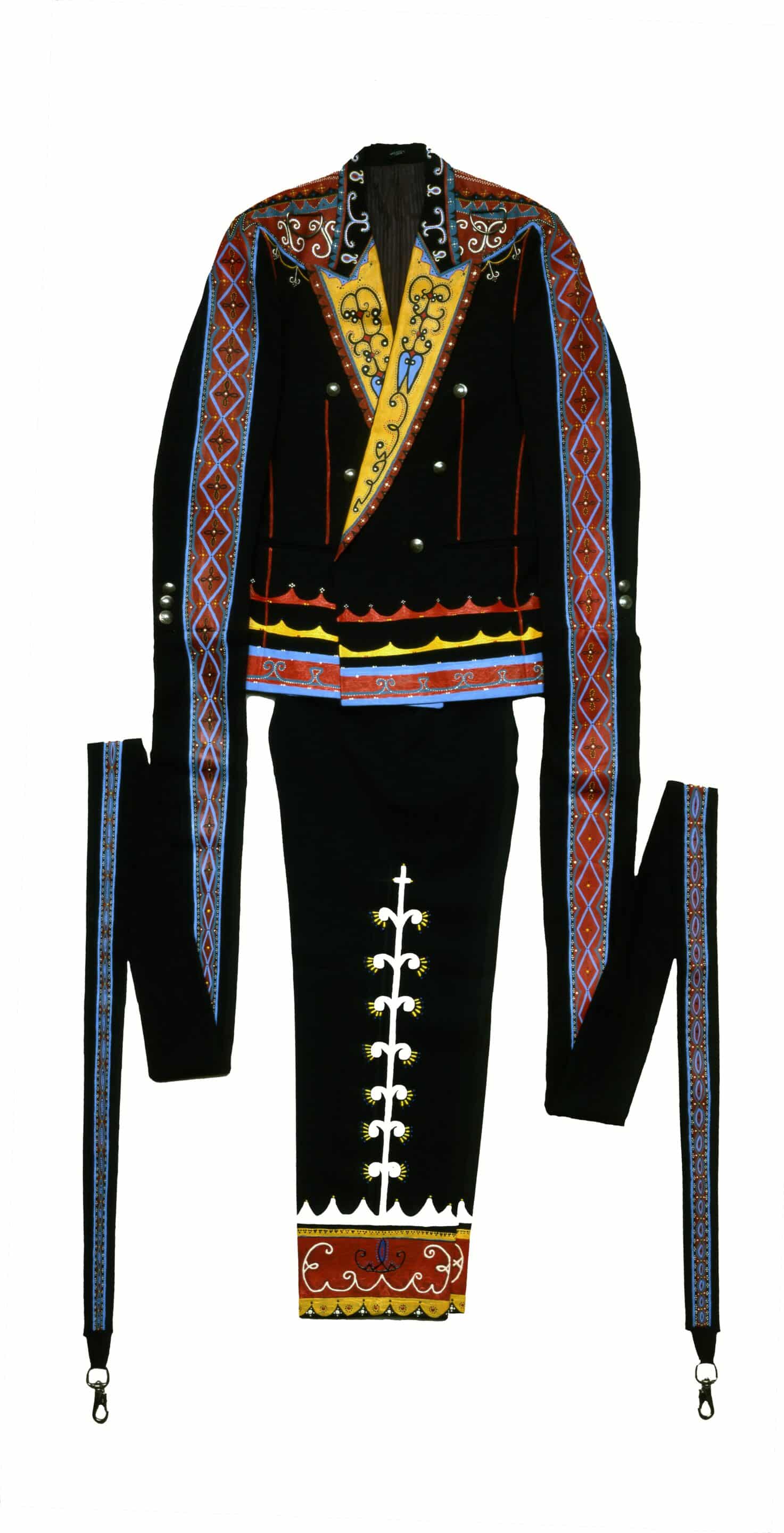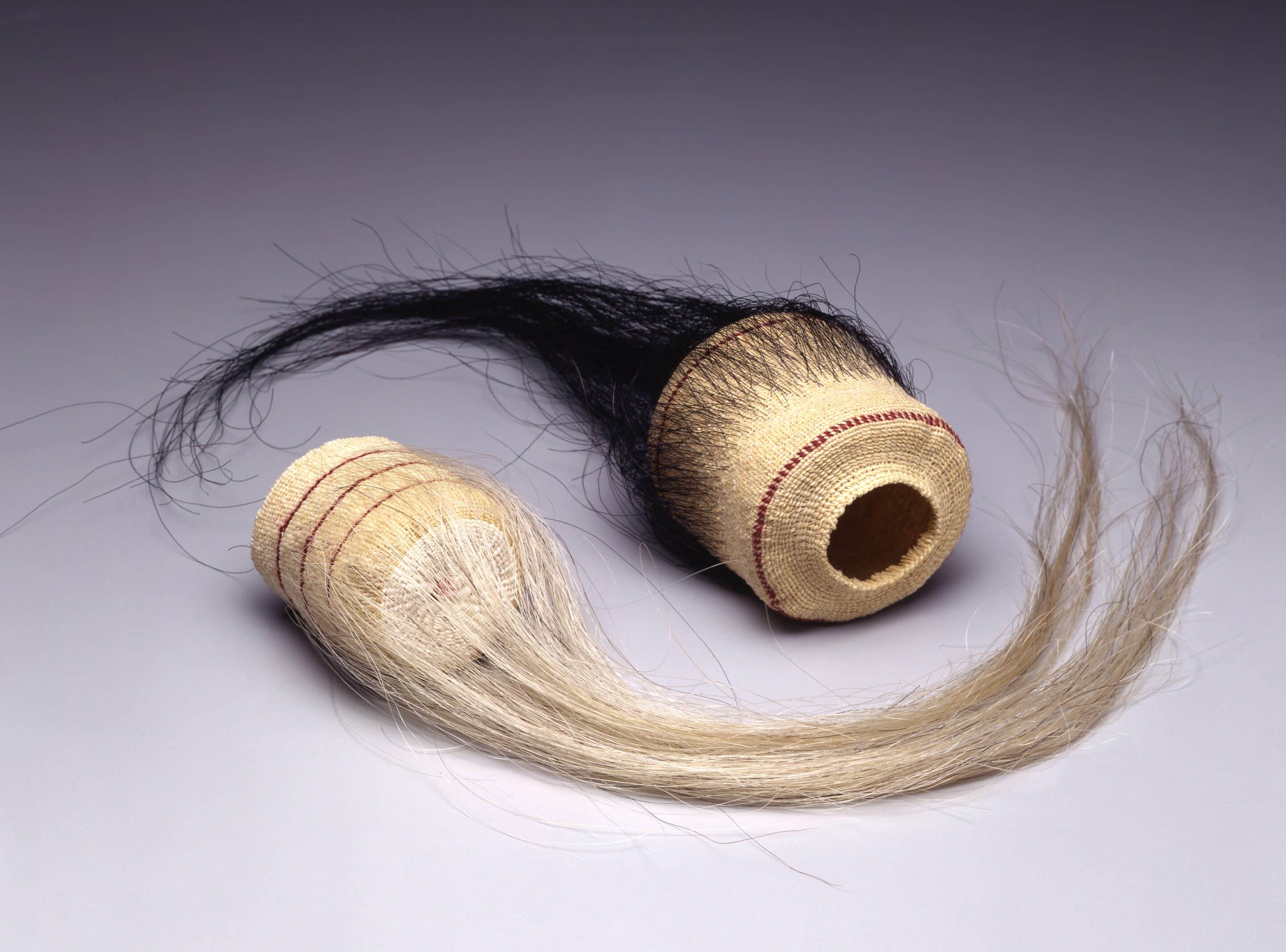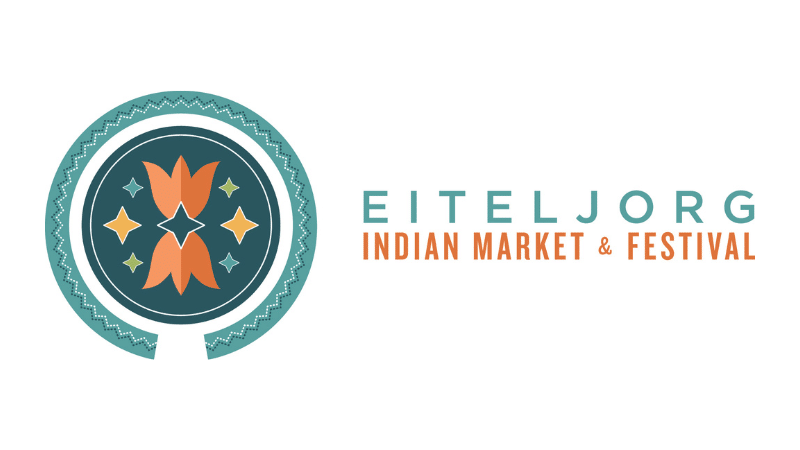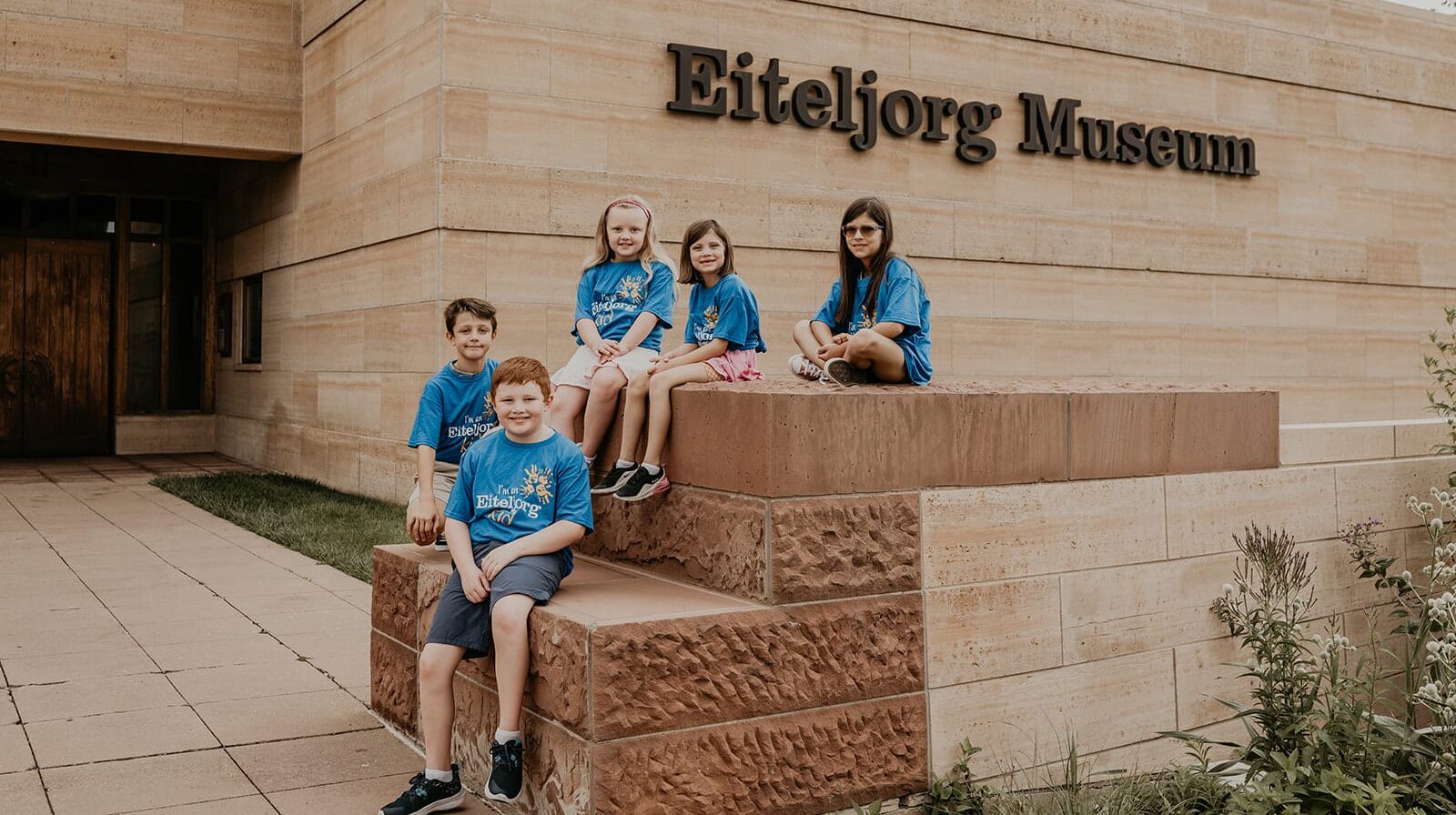“Native Art History Is Made Here” sets the stage for fall Fellowship show, features best of early rounds
By Elias Garza Garcia, former curatorial assistant

Teresa Marshall (Millbrook First Nation Mi’kmaq, born 1962)
Bering Strait Jacket #1, 1994, silkscreened fabric straightjacket with acrylic paint; fabric pants with acrylic paint; silk scarf with acrylic paint, metal, 68 x 28 x 2 inches
Museum purchase from the Eiteljorg Fellowship for Native American Fine Art 2001.3.1
Fans of contemporary Native American art — and specifically of the Eiteljorg Contemporary Art Fellowship — are in for a treat this year. In anticipation of this year’s Fellowship exhibition UNSETTLE/Converge, which opens Nov. 11, 2023, a related exhibition now open at the Eiteljorg focuses on the roots of the program. Native Art History Is Made Here features artworks from the 1999 and 2001 Eiteljorg Fellows — including some works that have not been on exhibit for several years.
The Eiteljorg Contemporary Art Fellowship celebrates and supports the work of contemporary Native / Indigenous artists of the U.S. and Canada. Every other year, a new group of artists is selected, and each receives an unrestricted cash award. The museum also purchases artwork from each artist to add to its permanent collections, curates a public exhibition of the five artists’ works and publishes a catalog.
In Native Art History Is Made Here, one of the highlights is a compelling textile work by 2001 Fellow Teresa Marshall, Bering Strait Jacket #1. This 1994 work is a suit jacket with elongated sleeves that end in lobster claw clasps, meant to buckle the arms together in a restricting manner. Silkscreened with Mi’kmaq patterns, the jacket is a metaphor for the restrictions and punishment the Canadian federal government has forced upon Indigenous peoples for expressing their cultures. Alternatively, the jacket can be seen as a protective de-vice that allows wearers to hold themselves in a self-embrace.
In the title of this work, Marshall humorously challenges the Bering Strait theory, which presupposes the origin of Indigenous peoples in North America as crossing a land bridge from Asia in Ice Age times. Because this anthropological theory disregards Indigenous worldviews of creation and being, and contributes to the damaging effects of colonization on North America’s First Peoples, it is subject of the artist’s critique.

Joe Feddersen (Confederated Tribes of the Colville Reservation, born 1953)
Grandmother’s Basket, 1996, woven waxed linen with white horsehair, cloth lining, 3 x 22 x 3 inches, 2001.2.1
Black Haired Basket, 1999, woven waxed linen with black horsehair, 3 ¾ x 19 x 3 ¾ inches, 2001.2.2
Museum purchases from the Eiteljorg Fellowship for Native American Fine Art
Also on view now in the exhibit is multi-disciplinary artist Joe Feddersen’s Grandmother’s Basket. A related work, Black Haired Basket, will rotate into the exhibit at a later date. Both are intricately woven small vessels that resemble a Yin and Yang symbol when positioned opposite of one another. Delicate horsehairs sprout from the weave around the sides and bottom of each basket creating a “head of hair.” Feddersen’s intimate and emotional relationship with materials allows him to embed his work with personal memories and histories. Shapes, textures and colors in Feddersen’s work communicate the landscapes and feelings of the artist’s home.
Fellows in demand at other museums
The Fellows whose work is in Native Art History Is Made Here each have made a significant impact in the art world at large. Four past Eiteljorg Fellowship artists are subjects of current or upcoming major retrospective exhibitions in the U.S. and Canada. For details, visit:
Eiteljorg.org/eiteljorg-fellows-with-exhibitions-at-other-museums.
Given the high level of interest in these trailblazing Indigenous artists at other institutions, we hope you will help us celebrate them and the Fellowship program by visiting the Eiteljorg and experiencing Native Art History is Made Here, which continues through March 3, 2024. Also, please plan now to attend events celebrating our 2023 Eiteljorg Fellowship exhibition this November; visit contemporaryartfellowship.eiteljorg.org to learn more.
NATIVE ART HISTORY IS MADE HERE
Continuing through MAR 3, 2024 Hurt and Harvey Galleries
SPONSORED BY:

The exhibit features artworks by two groups of Eiteljorg Contemporary Art Fellows:
1999 Fellows: George Morrison (Grand Portage Band Minnesota Chippewa Tribe), Marianne Nicholson (Musgamakw Dzawada’enuxw First Nation [Kwakwaka’wakw]), Rick Rivet (Sahtu / Métis), Lorenzo Clayton (Diné [Navajo]), Jaune Quick-to-See Smith (Confederated Salish and Kootenai Tribes)
2001 Fellows: Allan Houser (Warm Springs Chiricahua Apache), Rick Bartow (Mad River Band of the Wiyot Tribe), Joe Feddersen (Confederated Tribes of the Colville Reservation), Teresa Marshall (Millbrook First Nation Mi’kmaq), Shelley Niro (Mohawks of the Bay of Quinte)
The exhibition also includes a video exhibit by Shelley Niro in the Paul Gallery.
Editor’s Note: This article originally appeared in the June 2023 issue of Storyteller magazine.






